When should you add conditioner to your washing machine?
 Many people wash things only with powder or gel, caring only about washing the fabric. Some people worry about the softness and freshness of their clothes, additionally using fragrances and rinse aids. But both of them often do not know where to pour fabric softener into the washing machine and at what point in the wash. Meanwhile, manufacturers give clear recommendations, without which the effect of the product will be much worse.
Many people wash things only with powder or gel, caring only about washing the fabric. Some people worry about the softness and freshness of their clothes, additionally using fragrances and rinse aids. But both of them often do not know where to pour fabric softener into the washing machine and at what point in the wash. Meanwhile, manufacturers give clear recommendations, without which the effect of the product will be much worse.
When to add rinse aid
If you pour the rinse aid in the wrong place or at the wrong time, the product will “work” in vain - it will be washed down the drain or become mixed with powder. To prevent this, you need to add conditioner on time. The time depends on where the liquid is added: to the powder receptacle or drum.
The conditioner is poured into the dispenser before starting the wash. The machine is connected to the network, the tray is pulled forward, and powder and rinse aid are added to the appropriate cuvettes. Afterwards, the selector selects the rinsing program and activates the cycle.
Fabric softener is withdrawn from the dispenser during the rinse phase.
The algorithm changes if the washing machine does not have a separate compartment for the air conditioner. In this case, you can pour the product directly into the drum, but according to certain rules: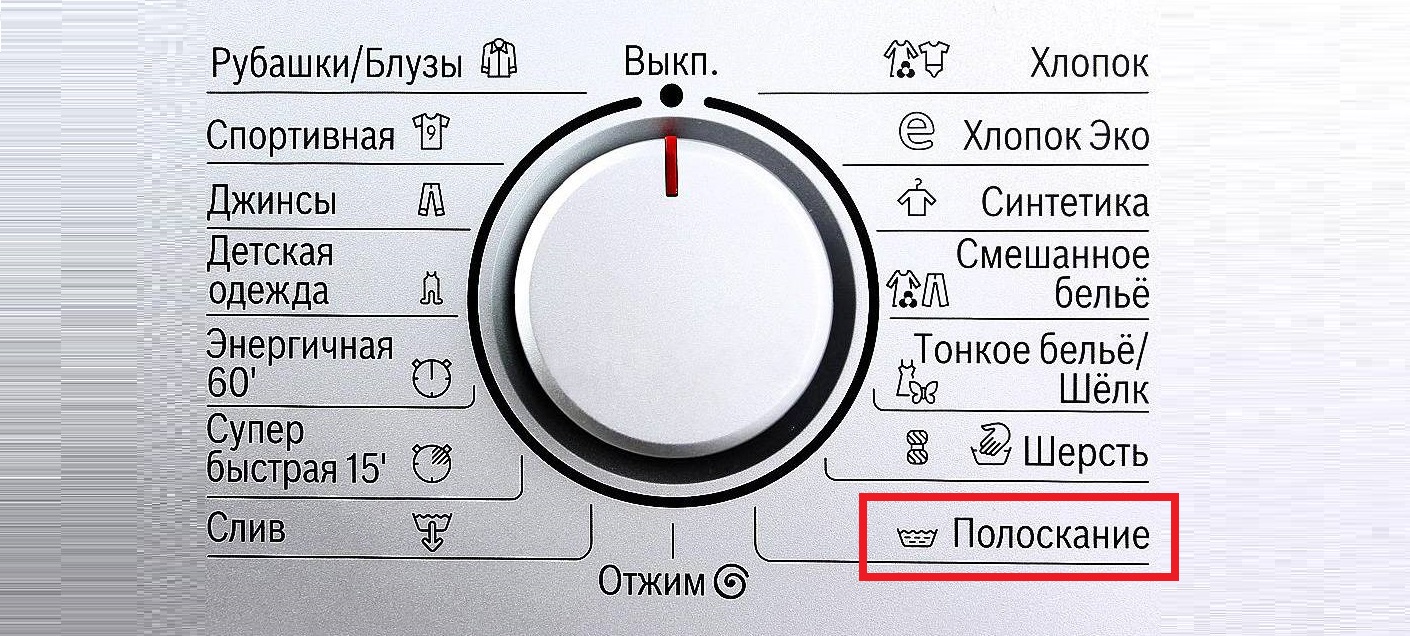
- the program starts without rinsing;
- at the end of the cycle the machine stops;
- the hatch door opens;
- the required amount of gel is poured into a special container;
- the container is placed in the washing machine;
- the hatch closes;
- The rinse and spin cycle starts.
If there is no special container for detergents, then you will have to do without it.After completing the main wash, remove the items from the drum, pour conditioner into the bottom of the empty cylinder and wash off the remaining residue with plain water. All that remains is to return the laundry to the machine and start rinsing.
Rinse aid compartment
The detergent dispenser is traditionally located in the upper left corner of an automatic machine. As a rule, the dispenser is divided into three compartments, differing in size and purpose. The “function” of the cuvette is determined using the applied markings.
- "II" or "B". The largest compartment of the powder receptacle, from which the cleaning agent is taken during the main wash. Therefore, powder or gel is poured here.
- "I" or "A". A medium-sized hopper that is used when the Pre-Wash or Soak program is activated. You can add powder, bleach or stain remover. When other modes are turned on, the compartment does not fill with water, remaining dry.

- "*". The smallest cuvette designed for adding additional liquid products, including conditioner. A notch with the inscription “max” must be applied to one of the walls of the compartment, indicating the maximum level of rinse aid fill.
The last cuvette is filled with water only during the rinsing stage, so the conditioner reaches the laundry at the right time. Afterwards, the liquid is washed off with water, and the fabric remains soft, smooth and fresh. Modern models of washing machines offer removable cuvettes for rinse aid. The principle of its use is the same, but the only difference is convenience. If necessary, such a bunker can be easily detached and washed from plaque and dirt.
The nuances of using an air conditioner
Getting the timing and compartment right isn't everything. In order for the air conditioner to work as efficiently as possible, you need to follow a few more important recommendations. So, you should remember about the dosage, type of product and the nuances of its dissolution.
- Dosage. If you add too much liquid, exceeding the recommended level, the product will not have time to dissolve, and the laundry will harden and become covered with white spots. Underfilling will also have a bad effect - the rinse aid will be ineffective. It is better not to experiment, but to calculate the dose according to the instructions on the package.
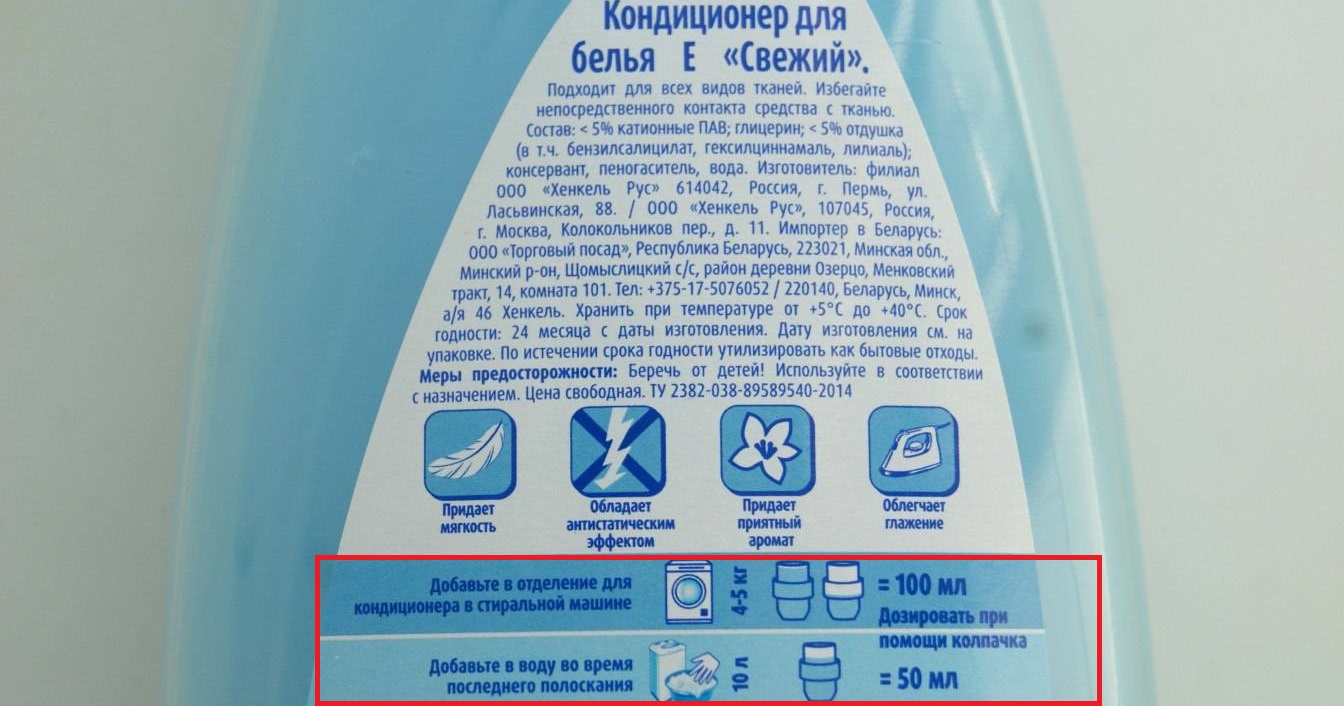
- Air conditioner type. The modern market offers dozens of different gels: for colored, wool, delicate fabrics, children's underwear, etc. It is important to choose the right liquid or use universal formulations.
- Compound. Concentrated rinses are often found, which are recommended to be diluted with water in a ratio of 1 to 3 before adding to the dispenser.
Another nuance concerns attentiveness. Liquid laundry detergents have similar packaging, so in a hurry, instead of conditioner, you can pour a stain remover or anti-scale mixture into the machine. The result is often disastrous. There is only one way out - to be extremely careful.
Keep the powder receptacle clean
Air conditioner, like any detergent, leaves a slimy layer on the walls of the powder receptacle, which over time hardens and becomes overgrown with dirt. If the cuvette is not cleaned, there will be too many deposits - the deposits will clog the pipes, the gel will be less easily washed out, and less liquid will get into the drum. To avoid this situation, it is necessary to regularly wash the powder receptacle.
It is recommended to clean the tray after each use of the washing machine!
There are three ways to clean the detergent drawer: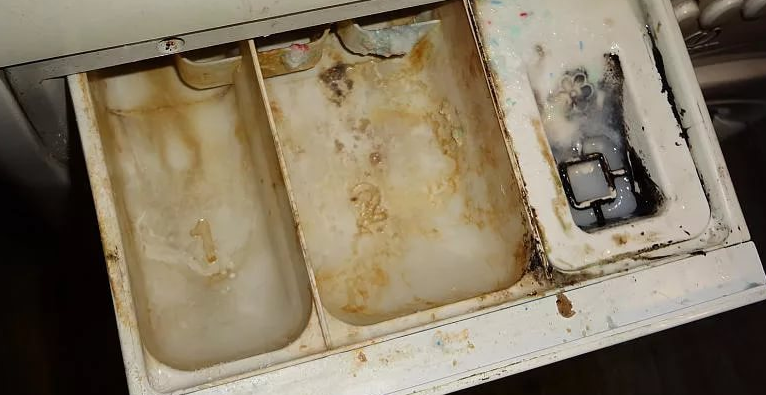
- remove the dispenser, then soak and clean by hand;
- fill the compartments with citric acid and run the machine on a high-temperature cycle;
- pour baking soda into the powder receptacle, then pour in vinegar, wait 15-20 minutes, rinse and dry.
Using any of the methods listed above, you can clean the tray quickly and at no extra cost. The main thing is not to neglect “cleaning”, to prevent blockages in the pipes and the spread of mold throughout the machine. We must not forget that over time, white plastic inevitably turns yellow or gray, which can be avoided by regular cleaning of the part.
Interesting:
Reader comments
- Share your opinion - leave a comment

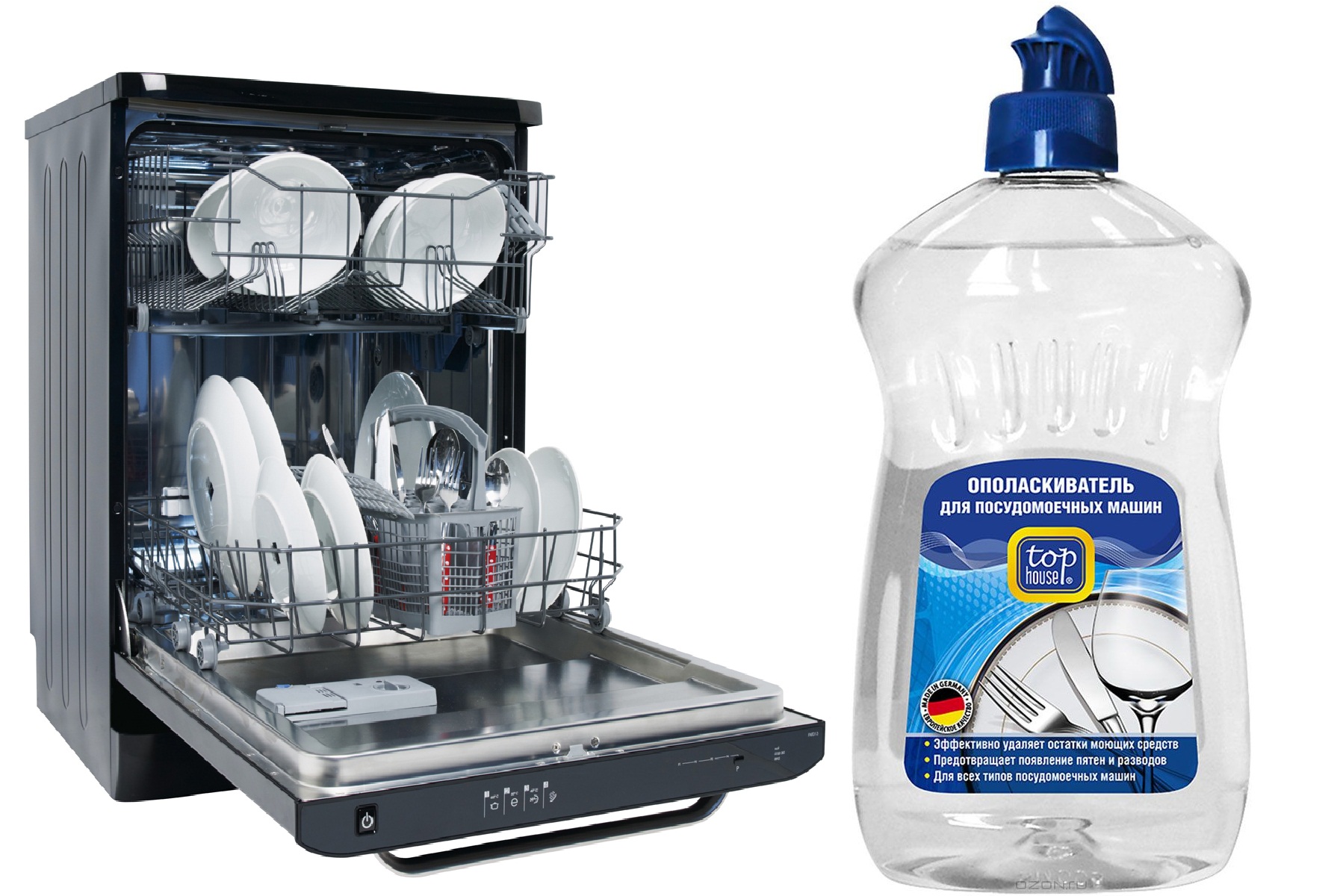
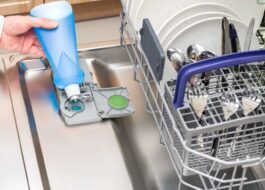

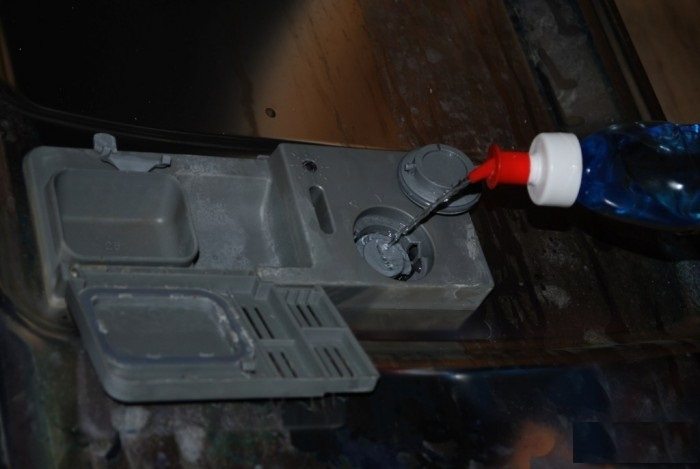
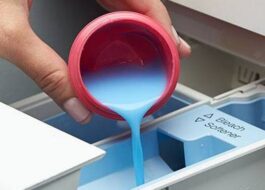
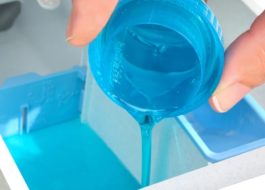














Add a comment